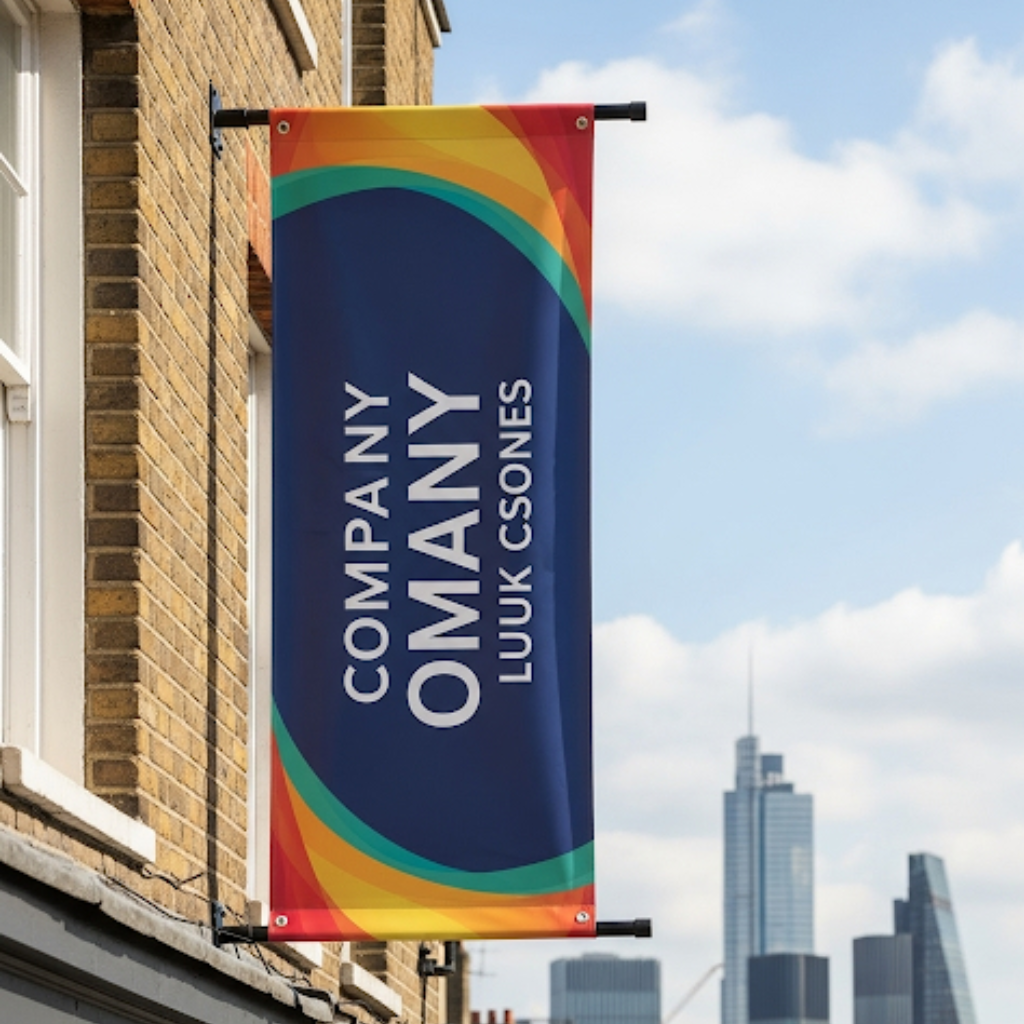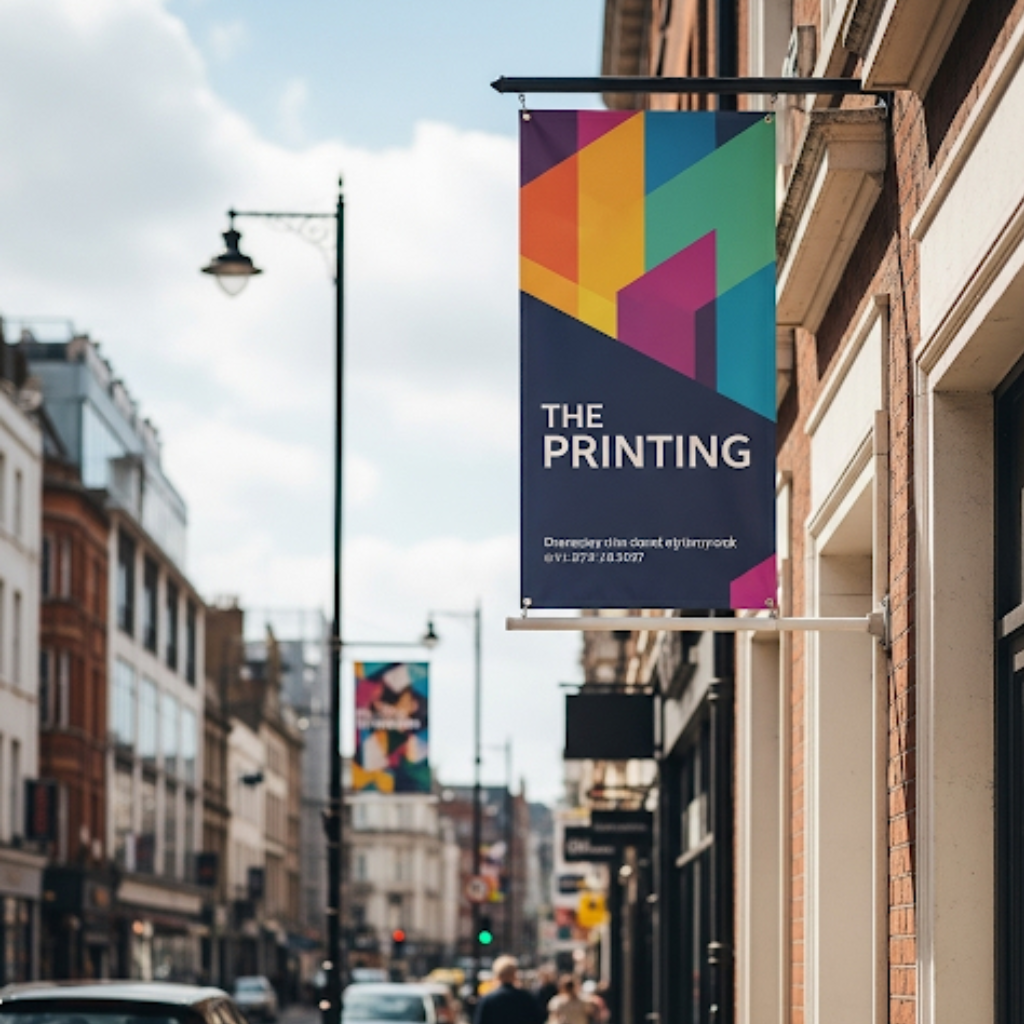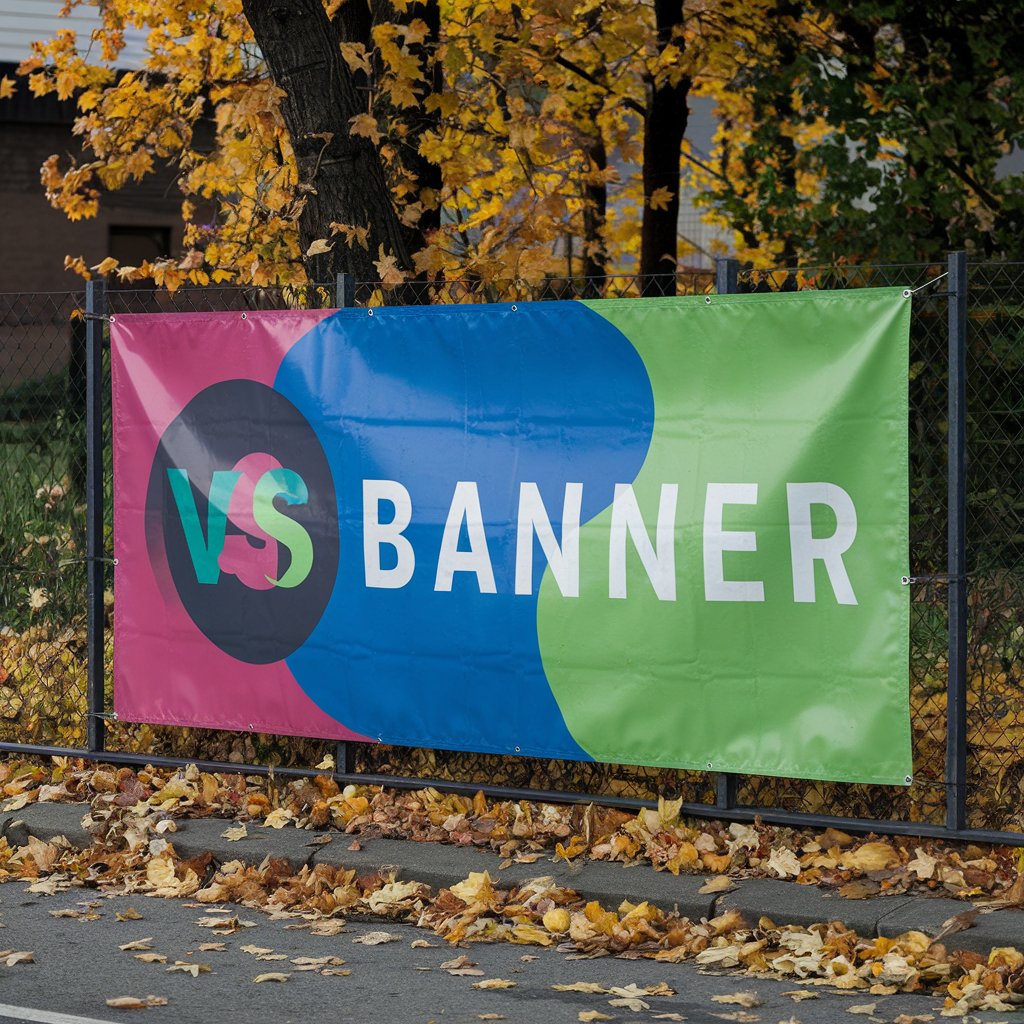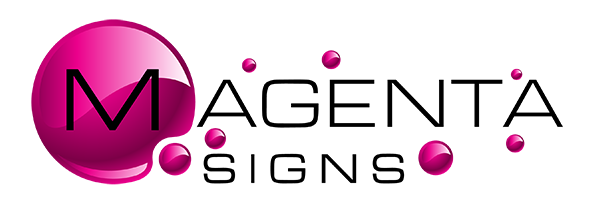When deciding between vinyl and fabric banners, consider the advantages of each. Vinyl is durable and weather-resistant, ideal for outdoor use, featuring vibrant, long-lasting prints. Fabric offers a refined appearance and is better suited to indoor environments with superior colour vibrancy. Vinyl is cost-effective for large displays and repeated use, while the fabric may yield a better ROI in specific settings. Evaluating material properties and intended applications can guide the decision-making process. Explore further to discover more insights.
Key Takeaways
- Vinyl banners offer superior durability and weather resistance, making them ideal for outdoor use.
- Fabric banners provide a refined aesthetic and vibrant colours, perfect for indoor settings.
- Considering budget constraints, vinyl is generally more cost-effective than fabric.
- Evaluate the intended application; vinyl suits high-impact, long-term use, while fabric excels in temporary displays.
- Printing techniques differ; vinyl ensures glossy, durable prints, while fabric offers a soft, elegant finish.
What Are the Main Differences Between Vinyl and Fabric Banners?
When examining vinyl and fabric banners, it is essential to consider their material components, which greatly influence their application and performance.
Vinyl banners, composed of polyvinyl chloride (PVC), are typically favoured for outdoor use due to their high resistance to water and UV exposure.
In contrast, fabric banners, often made from polyester or cotton, offer a more refined aesthetic but may not match the durability and longevity of vinyl in harsh environmental conditions.
Understanding Banner Material Components
Banner material selection is pivotal in determining the functionality and aesthetics of signage.
Vinyl and fabric banners are distinguished by their unique material components, which greatly influence their application. Vinyl, crafted from PVC, offers a durable and weather-resistant option, ideal for outdoor use. Its robust nature and ability to withstand harsh elements make it a preferred banner material for outdoor environments.
In contrast, fabric banners, often made from polyester, present a different aesthetic quality. The fabric’s texture provides a soft, elegant finish suitable for indoor applications.
The printing banner also varies; vinyl allows for vibrant, long-lasting prints, while fabric printing achieves a more natural look. Understanding these components guarantees the right choice among various banner types tailored to specific needs.

Compare Vinyl Banners and Fabric Banners for Outdoor Use
Selecting the appropriate banner material extends beyond understanding their components to evaluating their performance in specific environments.
In outdoor settings, the debate on vinyl vs fabric banners centres on features like vinyl durability and weight. Outdoor banners must withstand weather conditions, making the durable vinyl banner a popular choice due to its weather-resistant properties. Vinyl banners offer a robust solution for long-term use, enduring rain and strong winds.
Conversely, fabric banners are lightweight, making them easier to transport and install. However, they may not be as weather-resistant as vinyl. For insights into other aspects of outdoor signage, such as how they are custom-designed for businesses, you might find this article on outdoor building signs helpful.
When considering the best material for banner printing, one must compare vinyl and fabric banners based on specific environmental needs. Vinyl is often preferred for resilience, while fabric banners are ideal for short-term, portable displays.
Durability of Vinyl vs Fabric Banners
Durability is critical in the decision-making process between fabric and vinyl banners. Vinyl banners are renowned for their ability to withstand harsh weather conditions, making them the best material for outdoor events. This type of material is waterproof and resistant to tearing, offering longevity for indoor and outdoor use.
On the other hand, fabric banners, while providing a more sophisticated appearance, may not match vinyl’s durability in adverse conditions. The choice between vinyl vs fabric banners often hinges on specific environmental demands and budget constraints, since vinyl banners cost less.
For those requiring a material that can withstand frequent outdoor exposure, vinyl is typically preferred, whereas fabric may suffice for controlled indoor settings.
How to Choose the Right Banner for Your Business?
Selecting the appropriate banner for a business requires careful evaluation of factors such as durability, visual appeal, and environmental conditions.
Vinyl banners are ideal for outdoor settings due to their weather resistance, while fabric banners offer superior colour vibrancy for indoor use.
Understanding the specific material benefits for various environments guarantees maximum visibility and longevity of the promotional display.
Factors to Consider When Choosing the Right Banner
When determining the ideal banner for your business, it is crucial to evaluate several key factors that can significantly influence the effectiveness of your marketing efforts.
The choice between a fabric vs vinyl banner depends mainly on the intended environment—indoor or outdoor—and specific marketing requirements. Vinyl banners are ideal for outdoor use due to their durability and weather resistance, whereas fabric banners are made for indoor settings where image quality is prioritised.
Banner printing techniques also vary, affecting colour vibrancy and resolution, thereby influencing the decision-making process. In addition to the material, understanding standard banner sizes can help you select dimensions that suit your location and audience visibility, whether it’s a large roadside display or a compact indoor sign.
When choosing the right banner for your needs, consider how vinyl material withstands harsh environments compared to the softer fabric appearance. Ultimately, compare vinyl banners and fabric to guarantee alignment with your strategic goals.
When to Use Vinyl or Fabric Banners
Evaluating the ideal use of vinyl and fabric banners requires understanding their distinct attributes and applications. When deciding on a banner for your business, several factors should be considered to make an informed choice between vinyl and fabric banners.
- Durability Needs: Compare vinyl as a robust option suitable for outdoor environments, while fabric banners excel indoors with their lightweight appeal.
- Visual Appeal: Fabric banners are preferred for vibrant, high-resolution graphics. Vinyl banners, however, offer a glossy finish ideal for impactful visibility.
- Budget Constraints: Vinyl banners vs fabric options often present a cost-effective solution, especially for large-scale displays.
- Usage Duration: If you plan to use the banner repeatedly, vinyl offers longevity, whereas fabric provides elegance for temporary or indoor events.
Each material presents unique advantages for banners for different purposes.
Best Material for Banner Printing in Different Environments
Determining the ideal material for banner printing in diverse environments necessitates a thorough analysis of the specific conditions and requirements associated with each setting.
Vinyl and fabric banners offer distinct advantages, making them suitable for varying contexts. Vinyl banner material is favoured for its durability, especially in outdoor settings where exposure to weather elements is a concern; hence, vinyl banners are ideal for long-term outdoor use.
In contrast, fabric banners have their strengths indoors due to their lightweight and upscale appearance, particularly when printing on fabric is desired for vibrant colours and finer detail.
For versatility, a banner for multiple events should consider both materials. Choose vinyl when robustness is essential, but compared to vinyl, it may lack the elegance needed for specific indoor applications.
What Are the Pros and Cons of Using Vinyl and Fabric Banners?
When evaluating the pros and cons of vinyl and fabric banners, it is essential to consider their respective applications and limitations.
Vinyl banners are particularly advantageous for outdoor events due to their durability and weather resistance, while fabric banners offer versatility and aesthetic appeal for indoor and outdoor use. For businesses looking to enhance their visibility, understanding various signage options, including effective monument signs, can be very beneficial.
However, potential drawbacks such as the heavier weight of vinyl and the susceptibility of fabric to environmental conditions must be weighed to determine the best choice for specific banner needs.
Benefits of Vinyl Banners for Outdoor Events
For outdoor events, vinyl banners offer distinct advantages due to their durability and weather resistance. Vinyl banners are made to withstand harsh elements, making them ideal for various environments.
Here are the key benefits:
- Durability: Vinyl is easy to maintain and resistant to tearing, ensuring a longer lifespan. This makes it a prime choice for events prone to unpredictable weather.
- Print Quality: Vinyl banner printing delivers vibrant colours and high-resolution graphics, which can effectively capture attention in outdoor settings.
- Weight and Stability: Although heavier than fabric banners, this weight provides stability in windy conditions, ensuring banners remain visible and intact.
- Cost-effectiveness: When organisers choose vinyl banners, they benefit from a cost-effective solution, as using vinyl is generally more affordable compared to other materials, offering great value.
Advantages of Fabric Banners for Indoor and Outdoor Use
Fabric banners present a versatile option for indoor and outdoor applications, offering unique advantages that make them popular in various settings. Made from polyester, fabric banners can be used for high-quality printing with vibrant colours, as the ink is applied directly to the fabric. This technique is often seen with printing, ensuring longevity and resistance to fading. The texture of fabric banners offers a premium feel compared to the usually glossy appearance of vinyl, aligning with sophisticated branding needs.
| Feature | Fabric Banners |
|---|---|
| Material | Made from polyester |
| Printing Technique | Ink applied directly to the fabric |
| Maintenance | Easy to clean fabric banners |
| Cost | Generally higher than vinyl; fabric banners costs |
These banners are advantageous for indoor and outdoor use due to their aesthetic appeal and adaptability.
Potential Drawbacks of Vinyl vs Fabric Banners
While both vinyl and fabric banners serve as practical marketing tools, each material has its own set of drawbacks that must be considered for informed decision-making.
- Vinyl Durability vs. Fabric Aesthetics: Vinyl is known for its durability and weather resistance, but it often lacks the aesthetic appeal of fabric, which offers superior print quality and texture.
- Cost-Effectiveness and Environmental Impact: Vinyl banners are generally more cost-effective but pose a higher environmental impact due to their non-biodegradable nature. Fabric banners, while eco-friendlier, tend to be pricier.
- Weight and Installation Ease: Vinyl is heavier, complicating installation ease, whereas fabric banners are lighter and more manageable.
- Reusability and Maintenance: Vinyl requires less maintenance and is reusable, but fabric banners demand more care to maintain their appearance and print quality.

Which Banner Material Is More Cost-Effective?
When evaluating the cost-effectiveness of vinyl versus fabric banners, one must consider each material’s initial expenditure and longevity.
Vinyl banners typically present a lower upfront cost and offer resilience against outdoor elements, making them a favourable option for short-term promotions.
In contrast, while having a higher initial cost, fabric banners can provide a superior return on investment for businesses seeking a long-term branding solution due to their aesthetic appeal and versatility in various settings.
Cost Comparison: Vinyl Banner vs Fabric Banner
Although both vinyl and fabric banners serve as practical advertising tools, the cost-effectiveness of each material varies considerably depending on several factors.
A detailed cost comparison reveals the following:
- Material Cost: Vinyl banners generally have a lower initial cost compared to fabric, making them more budget-friendly in the short term.
- Printing Costs: Vinyl banner printing is typically less expensive due to simpler techniques, whereas fabric banners may require more advanced and costly printing methods.
- Durability and Longevity: Vinyl offers greater durability and weather resistance, potentially extending its lifespan and reducing the need for frequent replacements.
- Affordability: When considering durability and initial costs, vinyl banners often emerge as the more affordable option, particularly for those with limited budgets.
Long-term Investment: Vinyl vs Fabric for Businesses
The cost comparison of vinyl and fabric banners lays the groundwork for understanding their long-term investment potential for businesses.
Vinyl banners, known for their durability, are ideal for outdoor display due to their resistance to weather elements, making them a cost-effective choice for long-term outdoor advertising. Their robustness reduces maintenance needs, further enhancing cost-effectiveness.
Conversely, fabric banners excel in indoor displays where visual appeal is paramount. While they may require more maintenance, their aesthetic quality can enhance brand perception, providing intangible long-term benefits.
Businesses need to weigh the initial costs against maintenance and durability. Vinyl is advantageous for those prioritising outdoor longevity and minimal upkeep. For indoor environments where appearance matters, fabric banners offer a compelling investment.
How Does the Printing Process Differ for Vinyl and Fabric Banners?
The printing process for vinyl banners typically employs solvent, eco-solvent, or UV-curable inks, which adhere well to the non-porous surface of vinyl, ensuring vibrant and durable graphics.
In contrast, fabric banners are often produced using dye-sublimation technology, where heat transfers dyes into the fabric fibres, resulting in a soft finish and vivid colours.
The choice between these methods impacts the overall quality, with vinyl offering higher durability for outdoor use and fabric excelling in colour richness and texture for indoor applications.
Technology Used in Vinyl Banner Printing
Precision in printing technology plays a pivotal role in creating vinyl banners, setting them apart from their fabric counterparts. The process relies heavily on advanced digital printing techniques, specifically inkjet technology, to guarantee that large-format outputs are both UV-resistant and durable. This results in weatherproof banners that maintain their colour vibrancy over time.
Key aspects of vinyl banner printing include:
- Vinyl Printing: Utilises digital methods for precise, high-quality results.
- Inkjet Technology: Allows for detailed and vivid colour application, enhancing visual appeal.
- Durability: Offers exceptional banner longevity in various weather conditions.
- Cost-Effective: Provides an affordable solution without compromising on quality.
This combination of technology and material guarantees an effective medium for long-lasting advertising.
How Fabric Banners are Made and Printed
While vinyl banners boast impressive durability and vibrant hues, fabric banners offer different advantages through their unique production process.
In some cases, fabric banners are primarily made using polyester fabric or with a paper backing, which serves as an ideal substrate for dye-sublimation printing. This printing process involves transferring dye into the material via heat, allowing the ink to become part of the fabric. The result is eco-friendly, vibrant colours that penetrate the material deeply.
The sublimation printing guarantees that the colour vibrancy is maintained even under extensive use, contributing to the durability of the fabric banners. Additionally, the textile printing method allows for high levels of customisation, providing businesses with tailored branding solutions.
The eco-friendly nature of the dye-sublimation process, coupled with the lightweight and flexible properties of polyester, makes fabric banners a versatile and sustainable option. Banners are great for events, promotions, and long-term branding, so if you need a banner that combines style, performance, and sustainability, the fabric may be your best choice.
Quality Differences in Banner Material Printing
Exploring the distinctive qualities of banner materials reveals critical differences in the printing processes for vinyl and fabric banners. Each material option offers unique advantages concerning quality differences in banner printing.
- Durability and Weather Resistance: Vinyl banners excel in durability and weather resistance, making them ideal for outdoor use. The material can withstand harsh conditions without compromising quality.
- Colour Vibrancy and Printing Clarity: Vinyl typically delivers superior colour vibrancy and printing clarity due to its smooth surface, enhancing the visual impact.
- Fabric Texture and Printing Techniques: Fabric banners offer a softer texture with a different aesthetic appeal. The porous nature of fabric requires specialised dye-sublimation printing techniques.
- Application and Setting: Vinyl is preferred for high-impact applications, while fabric is chosen for settings where elegance and texture are prioritised.

Conclusion
To summarise, selecting between vinyl and fabric banners hinges on durability, cost, and intended use. Vinyl banners offer robustness and weather resistance, making them ideal for outdoor use, especially when you need a large banner that can withstand the elements. Meanwhile, fabric banners provide a premium appearance suitable for indoor settings. Cost-effectiveness varies with application frequency and longevity requirements. The printing process also differs, with vinyl supporting vivid, UV-resistant prints and fabric allowing for high-quality dye-sublimation techniques. Businesses must evaluate these elements for the best material choice.


